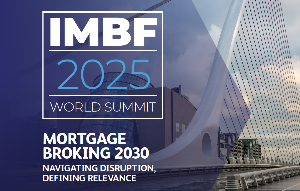
The latest QV House Price Index shows the average home dropped in value by 2.2% nationally over the three-month period to the end of April to sit at $1,040,927.
Average annual growth is down to 14% from the 18.3% growth in March.
In the Auckland region, the average value is at $1,492.807, falling 3.1% over the past three-months, with annual growth of 14.2%, down from 18.6% in March.
QV General Manager David Nagel says it’s difficult to see the market rising again any time soon with interest rates forecast to rise further in response to inflation, while net migration is likely to be negative for the rest of the year.
“Fortunately we have a well-insulated banking sector with LVRs having been in place for much of the past cycle and with the country at almost full employment. The likelihood of wholesale mortgage defaults is low.”
He says it’s no surprise the biggest value drops are in locations that had the strongest growth over the past couple of years. “These markets were the first to become overheated and that makes them more susceptible to a value correction as rising interest rates, tightening credit and affordability concerns start to kick in,” says Nagel.
Palmerston North and Wellington show the biggest three-month value declines at 5.4% and 3.6% respectively. Dunedin and Hastings, both at a 3.4% drop in value, are not far behind.
OCR and house price correlation
Meawhile, property data company Valocity’s research shows the correlation between the OCR, interest rates and median prices.
Researchers Wayne Shum and James Wilson have investigated thistorical data showing how changing interest rates have impacted the housing market.
Although the data shows the OCR dropping and house prices rising, it could also be the reverse when interest rates are rising.
Shum and Wilson’s analysis shows in the 2011 cycle, when the OCR rate fell from 3% to 2.5%, the median house sale price rose by 2%.
Within the next phase of the OCR dropping, which commenced in 2014/15 until a plateau in July 2019, when it declined from 3.5% to 1.5%, the median sale price increased from $450,000 to $540,000.
During The most recent phase of the OCR dropping from 1% to 0.25% there was a correlating increase in the median house sale price from $600,000 to $750,000 for the following 12 months.
Until recently, the impact of increasing OCR and mortgage rates on sale prices was not evident because of the FOMO effect and a shortage of homes being taken to market.
A correction is now underway and Westpac is predicting a 15% fall in house prices over the next two years and independent economist Tony Alexander says taking that figure into account as well as the impact of inflation, house prices could fall by as much as 25%.



